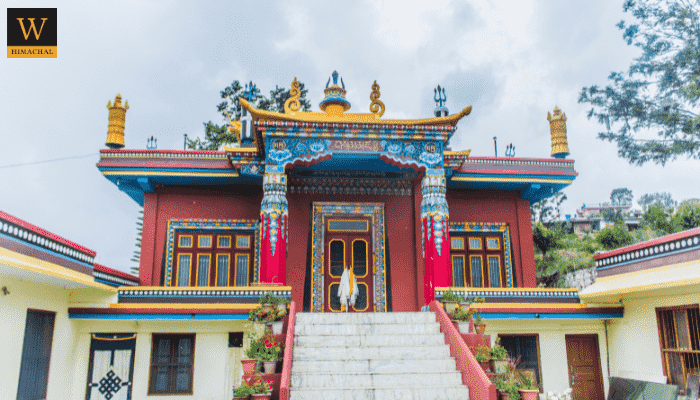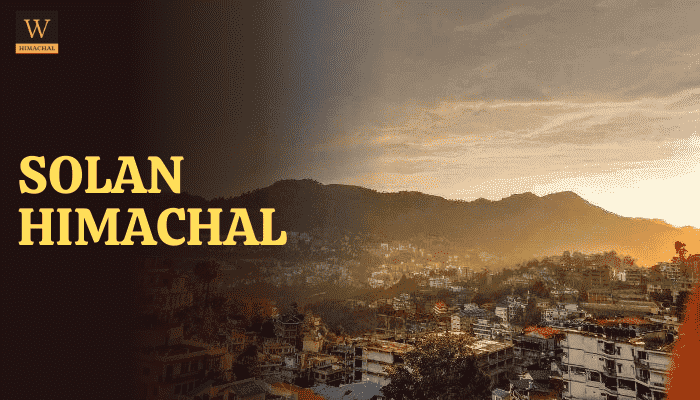Solan is more than simply an agricultural powerhouse; it’s also known as the “Mushroom Capital of India” due to its booming mushroom cultivation. Its past is centuries old, entwined with legends of bravery and spiritual legacy. Today, visitors looking for a peaceful getaway that combines scenic beauty with cultural immersion will find Solan to be both a centre of education and culture and a peaceful haven.
About Solan
Solan has deep historical roots that date back to the British Raj and the Gurkha era. Once home to the princely state of Kandaghat, this place rose to prominence under British rule because of its advantageous climate and location. The legacy of this era is still visible in the colonial architecture that dots the town, echoing tales of bygone days. Moreover, it boasts ancient temples and sacred sites that speak volumes about its spiritual heritage, making it a haven for history enthusiasts seeking to delve into the region’s past.
Key Highlights: Solan, HP
| State | Himachal Pradesh |
| Established | 1972 |
| Altitude | 1,550 metres (5,090 ft) |
| Avg. Temperature | 15 °C (59 °F) |
| No. of Villages | 2383 |
| No. of Tourist Destinations | 10 |
Tourism
It offers many attractions for nature lovers and adventure seekers alike. The town’s picturesque landscapes, enveloped in a blanket of pine forests and terraced fields, provide a tranquil escape from the hustle and bustle of urban life. Tourists can indulge in activities such as trekking through the scenic trails of Chail and Kasauli or simply rejuvenating amidst the serene environs of Shoolini Mata Temple. Additionally, Solan’s proximity to Shimla, the erstwhile summer capital of British India, adds to its allure as a gateway to exploring Himachal Pradesh’s cultural and natural treasures.
List of Popular Places
- Mohan Shakti Heritage Park
- Jatoli Shiv Temple
- Bon Monastery
- The Dagshai Jail Meseum
- Khetarpal Marg
- Sholoni Devi Temple
Culture and Language
Solan’s cultural tapestry is as vibrant as it is diverse, offering visitors a glimpse into the traditions and customs of the region. The local festivals, such as the Shoolini Mela, celebrated with great fervour, showcase the town’s deep-rooted religious beliefs and community spirit. Traditional Himachali music and dance further enrich the cultural fabric, providing a melodious backdrop to festivities and social gatherings. Moreover, the language spoken predominantly is Pahari, which reflects the region’s heritage and unity among its people.
Education
In addition to its natural and cultural splendour, the country is renowned for its educational institutions that attract students from across the country. The town hosts prestigious universities and research institutes, including the renowned Dr. Yashwant Singh Parmar University of Horticulture and Forestry. These institutions not only contribute to the academic landscape but also foster a spirit of intellectual inquiry and innovation among the youth. Solan’s commitment to education underscores its status as a knowledge hub and reinforces its significance in the broader academic community.
List of Popular Schools and Colleges
- Shoolini University
- Jaypee University of Information and Technology
- Bahra university
- Manav Bharti University
- Army Public School
- Kendriya Vidyalaya
- Gitanjali Smart School
As we embark on this journey through the region, we invite you to immerse yourself in Solan’s rich history, explore its natural wonders, and experience the warmth of its cultural heritage. This place offers a remarkable trip that embodies the spirit of Himachal Pradesh’s cultural core, regardless of your reason for visiting—the allure of its scenic beauty, the mystery of its historical sites, or the prospect of academic brilliance. Join us as we uncover the myriad facets of this place, where every moment is an invitation to discover, cherish, and celebrate the beauty of this Himalayan gem.
What is Solan known for?
Solan is famously known as the “Mushroom Capital of India” due to its significant mushroom cultivation. It is also renowned for its scenic beauty, educational institutions, and cultural heritage.
How can I reach Solan?
Solan is easily reachable by road from surrounding places like Shimla and Chandigarh. Buses, taxis, and private automobiles can all get you there. The closest major railway station is likewise in Chandigarh, as is the nearest airport, which is around 70 kilometres away.
What languages are spoken in Solan?
The predominant language spoken is Pahari, which is a dialect of the Himachali language. Hindi and English are also widely understood and spoken, especially in tourist areas and educational institutions.
Photos – Solan, Himachal Pradesh





